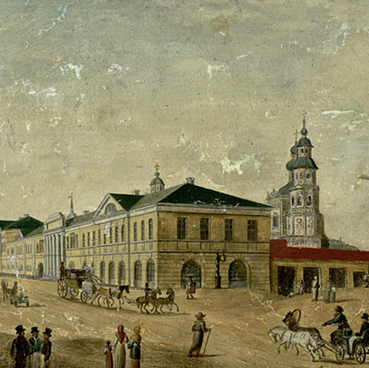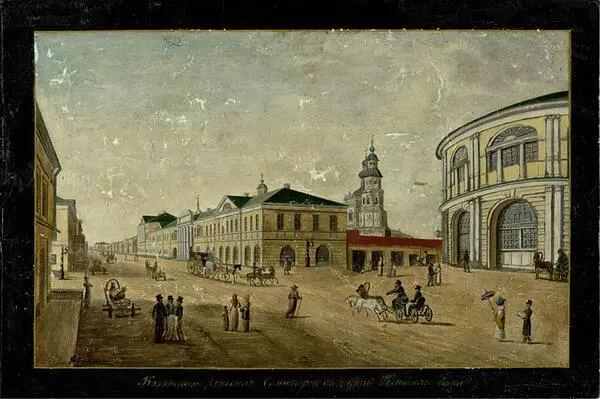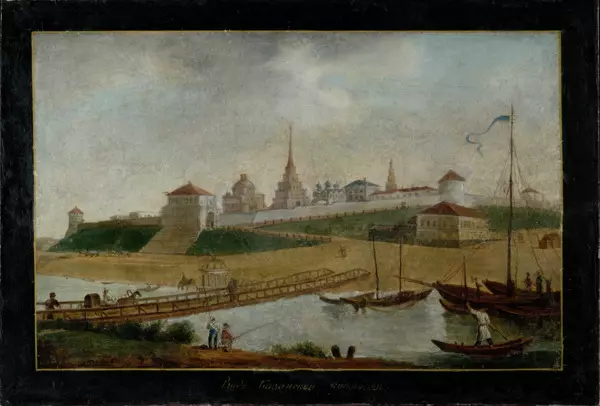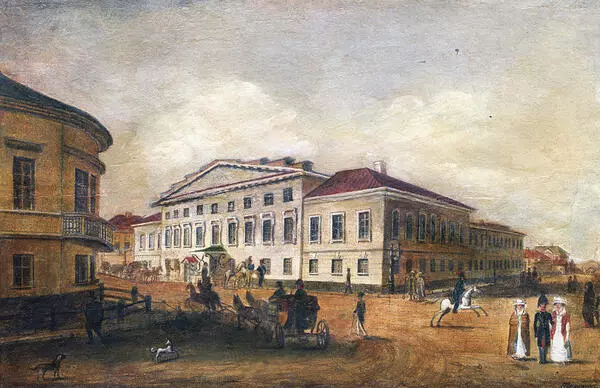Turin has become a part of the art history of the first half of the 19th century thanks to his numerous works in the urban landscape genre. For many years Turin studied the peculiarities of architecture and everyday life of Kazan. The astonishing observation skills and interest in urban architecture allowed the artist to create the most complete image of the city in which Yevgeny Boratynskiy lived from time to time with his family.
Vasily Turin was at the origin of artistic education in Kazan. The artist studied at the Academy of Arts in Saint Petersburg, and then moved to Kazan and started working as a painting teacher at the Main Public School. Many of his students went on to study at the Academy of Arts. Around 1815 he also founded a private drawing school in Kazan, which existed until 1834.
At the same time, Turin was engaged in icon painting and calligraphic etching. Having studied Kazan and Kazan people well, he made a number of drafts, sketches and studies dedicated to Kazan. The most known of his albums is the album of eight lithographs ‘Perspective views of Kazan, the principal city of the governorate, drawn from nature, lithographed and published by Vasily Turin’.
Turin was characterized by the desire for authenticity, clarity and simplicity, ‘the charm of naivety and that special beauty of thoroughness’, as the art critic Alexander Benoit wrote. Turin’s graphic arts bring us back to the age of the fascination with city views and their special charm.
On the etching from the museum’s collection we see the building of the Kazan Men’s Gymnasium, the first gymnasium formed in the province in 1758, and the only one to be awarded the title of imperial. Kazan gymnasium was modeled after the gymnasium at the Moscow University with two departments: for nobility and for commoners. The curriculum included Latin, German, French, introduction to philosophy, arithmetic, geography, history, music and drawing.
At the same time the Kazan gymnasium was the only one where Tatar, Arabic and other Oriental languages were studied. In 1769 the first Tatar class was opened here. Students of the gymnasium heroically defended its building and adjacent streets during the storming of Kazan by Yemelyan Pugachev troops in 1774. In 1804, the Imperial Kazan University was opened on the basis of the Kazan Gymnasium. Some of the gymnasium’s graduates include GavriIil Derzhavin, Sergey Aksakov, Nikolay Lobachevsky and many other prominent figures of science and the arts.
Vasily Turin was at the origin of artistic education in Kazan. The artist studied at the Academy of Arts in Saint Petersburg, and then moved to Kazan and started working as a painting teacher at the Main Public School. Many of his students went on to study at the Academy of Arts. Around 1815 he also founded a private drawing school in Kazan, which existed until 1834.
At the same time, Turin was engaged in icon painting and calligraphic etching. Having studied Kazan and Kazan people well, he made a number of drafts, sketches and studies dedicated to Kazan. The most known of his albums is the album of eight lithographs ‘Perspective views of Kazan, the principal city of the governorate, drawn from nature, lithographed and published by Vasily Turin’.
Turin was characterized by the desire for authenticity, clarity and simplicity, ‘the charm of naivety and that special beauty of thoroughness’, as the art critic Alexander Benoit wrote. Turin’s graphic arts bring us back to the age of the fascination with city views and their special charm.
On the etching from the museum’s collection we see the building of the Kazan Men’s Gymnasium, the first gymnasium formed in the province in 1758, and the only one to be awarded the title of imperial. Kazan gymnasium was modeled after the gymnasium at the Moscow University with two departments: for nobility and for commoners. The curriculum included Latin, German, French, introduction to philosophy, arithmetic, geography, history, music and drawing.
At the same time the Kazan gymnasium was the only one where Tatar, Arabic and other Oriental languages were studied. In 1769 the first Tatar class was opened here. Students of the gymnasium heroically defended its building and adjacent streets during the storming of Kazan by Yemelyan Pugachev troops in 1774. In 1804, the Imperial Kazan University was opened on the basis of the Kazan Gymnasium. Some of the gymnasium’s graduates include GavriIil Derzhavin, Sergey Aksakov, Nikolay Lobachevsky and many other prominent figures of science and the arts.





